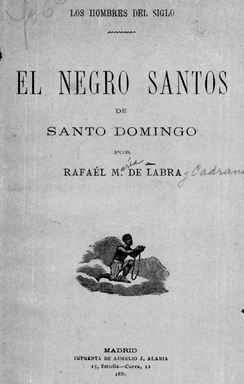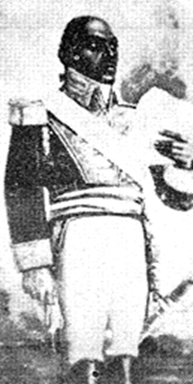"Emancipation in Santo Domingo" by Anne Eller, Ph.D.
Eller is Assistant Professor of History at the University of Connecticut. Her research is on Haiti and the Dominican Republic.
The abolition of slavery in Santo Domingo, made concrete in 1822, was a more protracted process than the institution’s relative marginality might have portended. A poor colony, especially relative to its plantation colossus neighbor, Santo Domingo’s population had nevertheless rebounded in the latter decades of the 1700s. Wealthier cattle rancher colonists (who traded their goods westward) openly hoped for a resurgence of slavery in the east, most famously with Antono Sánchez Valverde’s 1785 Idea of the Value of Santo Domingo. Instead, highland maroon communities and free towns (like San Lorenzo de los Mina) continued to offer refuge to enslaved men and women, primarily arriving from the plantations of the west.
As fighting broke out in Saint-Domingue (later Haiti) in late summer of 1791, most historians assert that about 12,000-14,000 were enslaved in Spanish As fighting broke out in Saint-Domingue (later Haiti) in late summer of 1791, most historians assert that about 12,000-14,000 were enslaved in Spanish Santo Domingo, although some estimates are somewhat higher. The Spanish territory was intimately involved in conflict in the west; authorities recruited commanders and battalions of so-called black auxiliaries, and the territory itself broke into revolutionary fighting (most famously, in a revolt at the sugar mill Boca de Nigua in 1796).
When the territory passed to French hands in 1795 as part of the Treaty of Basel, all citizens ought to have been free, as per revolutionary decrees of the two years prior. Chaotic local conditions (including the limited migration of some Saint-Dominguan slaveholders eastward) and subsequent political retrenchment in France delayed decisive abolition, however. Toussaint Louverture’s arrival and abolition decree in Santo Domingo’s capital city in 1801 is marked as the first official abolition of slavery, but Napoleonic claims to the territory sought to reverse this emancipation. French commanders (in particular, General Jean-Louis Ferrand) aggressively sought to reestablish slavery in the east in the next six years, even authorizing the capture and sale of young children from the newly-established Haitian state.
After expulsion of the French in the pro-Spanish Reconquista fighting of 1808-9, the colony was once again Spanish, with no definitive abolition on the horizon. For all of its revolutionary ferment in the period – numerous conspiracies of various natures, diminished population and attention from the metropole – de jure abolition did not arrive again to the east until 1822. For the next twenty-two years, the formerly Spanish territory was officially joined with the Haitian republic, ending slavery in the territory for good.
The unremittingly hostile climate of the mid-century Caribbean and the living memory of slavery on the island itself dictated that emancipation and citizenship remained focal points of political discourse and popular activism long after 1822. Reaffirmation of abolition was one of the very first constitutional articles when the Dominican Republic separated in 1844, for example. The final time a slaveholding power directly challenged the island’s citizens was the renewed Spanish occupation of the east in 1861-5, which was rejected in an enormously popular rebellion that drew support from the west, as well as from networks of support from neighboring islands.

